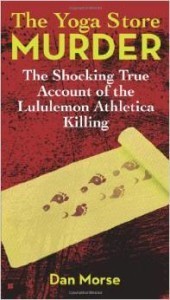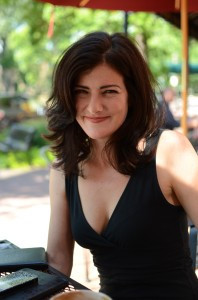Elizabeth Spann Craig's Blog, page 134
June 29, 2014
Writing Real Characters Amid Horrible Violence: Tips from a True-Crime Writer
By Dan Morse, @morsedan, author of The Yoga Store Murder
In 2011, as a reporter for The Washington Post, I covered the most violent of murders in the least likely of places. Someone had slashed, stabbed and struck Jayna Murray more than 331 times in the back of a high-end yoga store. The killer used more than six weapons, including a hammer, wrench, knives and a jagged steel bar used to display merchandise. That dichotomy – complete mayhem in a place of peace and Zen – got me thinking about writing a book about the case.
To pull readers along for 300-plus pages, though, I needed detailed scenes that not only advanced the plot, but also built out very real characters. After all, readers of non-fiction are like readers of mysteries; they want to get to know people as they turn each page.
To write such scenes, I first laid a foundation of detailed reporting. I got some good breaks. I was able to read 11,000 text messages pulled from the killer’s phone, which offered direct dialogue and candid thoughts. I conducted repeated interviews with detectives – at police stations, bars, and back patios. Those characters formed the core of the book – the killer and the cops. I also spent a lot of time with Jayna Murray’s family, who helped me understand Jayna and how devastated the murder had left them.
During one interview, David Murray, Jayna’s dad, started speaking about the last time he’d seen his daughter alive. He lives in Houston, and was staying at Jayna’s condominium just outside of Washington DC. In my mind, I saw David’s story going to a place that could be easily conveyed in a scene: Jayna driving David to the airport, the two of them going inside and lingering before take-off. But that’s not what happened. On the morning David was to leave, Jayna had a lot of packing to do for a planned trip to a wedding. So David took the subway to the airport. It was only later, when I wrote the scene, that I had one of those oh-yeah-that-axiom-again-forehead-slapping moments: The truth is almost always more interesting than what writers hope the truth to be. And it’s that nuanced truth that builds out characters.
In this case, as readers of the book were starting to know by page 120, David and Jayna were strong, independent people. David had served as a Special Forces officer in Vietnam, then gone on to manage oil drilling sites around the world. Jayna went bungee jumping to celebrate her 30th birthday, and was two months shy of getting her MBA and pursuing a career in corporate marketing. The two were so close they didn’t need drawn-out goodbyes – they’d be on the phone soon enough, seeing each other again soon enough. A parting that was understated seem to fit them.
So here is how I closed out that scene, picking up from the day before, when the two had met in North Carolina so they could see off Jayna’s brother Hugh, who was being deployed to Iraq. David took the occasion to spend some extra time with Jayna.
He drove back with her to Washington – just the two of them, talking in her car while driving north. Subjects swung from politics to pacifism to David’s questions about the principles of marketing as they applied to specific business projects. “Why do you say it that way?” he’d ask. David could sense Jayna’s fears for her brother Hugh. They were well-placed: Iraq was chaotic, even if it was no longer at war. And her brother would be moving around, the most dangerous thing to do there. David, of course, knew all about combat. “Hugh is going to be fine,” David told his daughter.
Time was ticking on their visit. As they got into Washington, David drove Jayna by a friend’s house so she could pick up a bridesmaid dress. The two planned to get a few hours of sleep before their flights the next morning – David back home to Houston and Jayna to Minnesota, for a wedding. But when it was clear Jayna needed more time to finish packing that morning, David said he didn’t need a ride to the airport. He hugged his daughter good-bye. “I love you,” they said to each other.
David walked out of the condo and two blocks to a subway stop. It was January 20, 2011, and the last time he’d see his daughter.
Struggling through engineering classes at Vanderbilt University, Dan Morse decided to
 give sports-writing a go at the campus newspaper. It proved a better fit. In his junior year, he tried out for the football team – going on to write a year’s worth of columns chronicling his trials, tribulations and deep bruises as a slow but poor route-running wide receiver. After graduation, Morse combined his engineering degree with writing and, as if it had been well-planned, took a position at Civil Engineering magazine in New York. Who among us can forget his prescient 1989 piece on waste-water treatment disposal regulations: “Sludge in the Nineties.”
give sports-writing a go at the campus newspaper. It proved a better fit. In his junior year, he tried out for the football team – going on to write a year’s worth of columns chronicling his trials, tribulations and deep bruises as a slow but poor route-running wide receiver. After graduation, Morse combined his engineering degree with writing and, as if it had been well-planned, took a position at Civil Engineering magazine in New York. Who among us can forget his prescient 1989 piece on waste-water treatment disposal regulations: “Sludge in the Nineties.”Wanting to know how other things worked – crime, politics, business – Morse sought a reporting position at more than 50 newspapers. Exactly one of them offered him a job, The Alabama Journal, an afternoon daily in Montgomery, Ala., where Morse settled in as a cops reporter. He moved on to that city’s morning paper, The Advertiser, covering state politics and becoming a Pulitzer Prize finalist for stories on the Southern Poverty Law Center. From there, he moved to The Baltimore Sun, The Wall Street Journal, and, in 2005, The Washington Post. (Some of his favorite stories, and the most interesting people he has met, can be viewed here.)
Morse grew up with four siblings in Urbana, Ill., where his parents still live. He is married to Dana Hedgpeth, a fellow Post reporter. They have a daughter named C.C.
Purchasing Links: Amazon
Dan’s Twitter
Dan’s Facebook Page
Website
The post Writing Real Characters Amid Horrible Violence: Tips from a True-Crime Writer appeared first on Elizabeth Spann Craig.
June 28, 2014
Twitterific Writing Links
by Elizabeth S. Craig, @elizabethscraig
Twitterific links are fed into the Writer’s Knowledge Base search engine (developed by writer and software engineer Mike Fleming) which has over 23,000 free articles on writing related topics. It’s the search engine for writers.
5 Tips to Gain Confidence and Overcome Writer’s Doubt: http://ow.ly/y9kmW @adderworld
Real Life Diagnostics: Weaving in World Building Details. How Much is Too Much? http://ow.ly/y80VH @janice_hardy
How to Hack the Habit of Creativity: http://ow.ly/y81gA
So You Want to Write a Picture Book for Children? http://ow.ly/y9kOU @Nimpentoad
Write Your Characters to Life: http://ow.ly/y9kex @SheriWrenAuthor @SouthrnWritrMag
Publishing Too Soon: http://ow.ly/y816M @womenwriters
Tips for making pop culture references in our books: http://ow.ly/y9k37 from Clever Girl Helps
Tips for writing an emotionally heavy scene: http://ow.ly/y80YU from Clever Girl Helps
Punctuating Dialogue: http://ow.ly/y9k9C @LitCentralOC
Tweet THIS, Not That! 12 Things Not to do on Twitter: http://ow.ly/y81bQ @mollygreene @annerallen
Media Options for Transmedia Storytelling: http://ow.ly/y9nlI @cherylrwrites
Resources for Writers: WKB and Ebook Services Professionals: http://ow.ly/ywlVa
One Writer’s Journey From Highbrow To Commercial Sell-Out: http://ow.ly/ybXEy @NicoleTrilivas @xojanedotcom
C.S. Lewis on the 3 Ways of Writing for Children and the Key to Authenticity in All Writing: http://ow.ly/ybWPN @brainpicker
The Secret Weapon of YA/NA Writers: http://ow.ly/ybX7c @NakedEditor
Quotes from @HughHowey ‘s Facebook chat: http://ow.ly/ybYEk
Working-class fiction has been written out of publishing: http://ow.ly/ybXo6 @guardianbooks
12 Food-Related Tips To Fuel Your Writing Career: http://ow.ly/ybWl6 @pubcoach
10 Trends in Book Marketing for 2014: http://ow.ly/ybX9E @TargetMktng
The Accidental Non-Linear Series: http://ow.ly/ybWEa @LaurieBoris
Psychological Benefits of Writing: Why Richard Branson & Warren Buffett Write Regularly: http://ow.ly/ybXye @entmagazine @GregoryCiotti
Is Querying for an Agent is a Waste of Time? http://ow.ly/ybXQg @brunsdavid
25 Secrets Of Publishing, Revealed: http://ow.ly/ybZ8X @MikeRUnderwood for @ChuckWendig
9 Literary Magazines for New and Unpublished Writers: http://ow.ly/ybWUL @A_WritersStudio
How Not to Release a Self-Published Novel: http://ow.ly/ybYWF @cmskiera
College Libraries Push Back as Publishers Raise Some E-Book Prices: http://ow.ly/ybXjH @chronicle
To Pseudonym or Not to Pseudonym: http://ow.ly/ybWuG @CEMcKenzie1
How Not To Be a Diva Debut Author: http://ow.ly/yhBGT @TheLitCoach
Social media basics for authors: simple and effective book promotion tips: http://ow.ly/yhBlt @amberstanley0
Copying an eBook from Cover to Cover: http://ow.ly/yhBiU @hyperallergic
3 Tips to Enhance Your Marketing Efforts: http://ow.ly/yhBU2 @marygkeeley
10 Steps To Provide a Helpful Critique http://ow.ly/yhBsk @Shirl_Corder
5 Tips for Creating a Lead Character Your Audience Will Really Care About: http://ow.ly/yhBAF @dianedrake
What a good writer needs most: http://ow.ly/yhBn5 @joelachenbach @washingtonpost
What Do Your Characters Know? http://ow.ly/yhBkc @Massim0Marin0
Beyond the Great Idea: http://ow.ly/y9kjT @JulieEshbaugh
Top 3 Things to Cut From Your Writing: http://ow.ly/y9jZs @WritersEdit
How to Validate Your Characters’ Traits: http://ow.ly/y9k68 @shalvatzis
Character Eye Descriptions: The Window to Your Story: http://ow.ly/y9kSa @SharlaWrites
When You Start Comparing Yourself To Other Writers… http://ow.ly/y9kUs @carlywatters
Overwhelmed by Character and Plot Development? Place and the Novel’s Plot: http://ow.ly/ytW8g @megwolfewrites
Scrivener – Your Happy Ending: http://ow.ly/y7Onv @Gwen_Hernandez
7 Tools to Hook Your Reader: http://ow.ly/y7OE6 @monicamclark
Book Cover Copycats: Is It Flattery or Copyright Infringement? http://ow.ly/y7PjF @angelaackerman
6 Reasons Why English Writers Should Self-publish in Germany: http://ow.ly/y7OQs @MissLeontine
Creating Authentic Character Emotions http://ow.ly/y7OKF @C_Herringshaw
How to fail at being a writer: http://ow.ly/y7Qvc @Kelsye
Reviving Dead Stories : http://ow.ly/y7RD3 @horrortree
The @HachetteBooks-@PerseusBooks deal: http://ow.ly/yqshT @Porter_Anderson @TheFutureBook
How 1 writer wrote a novel while battling writer’s block: http://ow.ly/y7Ryp @freya_north
The Laborers of Work-for-Hire Crime Fiction Writing: http://ow.ly/y7Pmq @BrashBooks
5 Tips for Researching Your Book’s Competition (and Why You Should): http://ow.ly/y7QAO @loftliterary
7 Signs Your Book Idea is Worth Publishing: | Wise Ink: http://ow.ly/y7Q0r
7 Things Every 21st Century Writer Needs To Do: http://ow.ly/y7OB8 @PHOENIXmagUK
The one big reason authors need to blog: http://ow.ly/ytgoj @Belinda_Pollard
Should boys read boys? http://ow.ly/y7Qmf @GdnChildrensBks
Which POV starts the story and when to introduce other characters: http://ow.ly/y7Rk1 @CaitLondon
Why Backstory is the Spine of Your Story: http://ow.ly/y7PTU @Sonali_Dev
Thinking of Self-Publishing? Put These Books in your Self-Publishing Tool-kit http://ow.ly/y7RH0 @susankayequinn
Barber shops and salons as settings in crime fiction: http://ow.ly/yqFh9 @mkinberg
Free Book Promotion Web Sites – 15 of the Best: http://ow.ly/y3I02 @travisnward
Why Your Book Deal Is Just the First Step: http://ow.ly/y3INj @LizandLisa @writerunboxed
This Is Your Brain on Writing: http://ow.ly/ysuIk @carlzimmer @NYTimes
How to Write a Flat Character Arc: The Second Act: http://ow.ly/y3IaJ @kmweiland
Story Midpoint & Mirror Moment: Using Heroes’ Emotions To Transform Them: http://ow.ly/y3IFI @angelaackerman
9 Common Exposition Questions Answered: http://ow.ly/y3HLk @bang2write
5 Differences Between TV and Screenwriting: http://ow.ly/y3IVi @jacobkrueger
You Know You’re a Writer When… http://ow.ly/y3Iip @lifelaughtrlove
4 Kinds of Sentences Every Writer Should Remember: http://ow.ly/y3HR8 @a_wrighton
3 reasons 1 writer has fallen in love with writing short stories: http://ow.ly/y3IRe @mlouisalocke
Expand Our Senses and Improve Our Descriptions: http://ow.ly/y3I6w @jamigold
What Makes a Character Sympathetic? This Video Essay Explains: http://ow.ly/y3IHd @nofilmschool
Eat Lightning, Write Thunder: Writing Lessons From Rocky Balboa: http://ow.ly/y3IKI @helpfulsnowman
The Moment In Your Story That Changes Everything: http://ow.ly/y3HOr @InkyBites
5 Tips for Writing a Synopsis that Shines: http://ow.ly/y3IlY @marygkeeley
Writing Basics: What is Conflict? http://ow.ly/y3I92 @janice_hardy
4 Ways To Rock Goodreads’ New ‘Ask The Author’ Feature: http://ow.ly/y3I39 @ebooksandkids
Festivals and fairs as settings in crime fiction: http://ow.ly/ypGva @mkinberg
Is life really keeping us from writing? The inspiring story of Robert Louis Stevenson: http://ow.ly/y2OUD @rxena77
Killing the Top Ten Sacred Cows of Indie Publishing: You Need An Agent to Sell Overseas | http://ow.ly/y2PBC @deanwesleysmith
Why Hiring An Editor For Your Book Is Unavoidable: ://ow.ly/y2PqX @selfpubreview
4 Observations On Publishing From a Former Penguin Exec.: http://ow.ly/yoVUK @Porter_Anderson @raffers
Why ‘Read My Book!’ Doesn’t Work…And What To Do Instead: http://ow.ly/y2PaQ @badredheadmedia
Poisons: How to Use Them: http://ow.ly/y2PxX @mythcreants
Getting Unstuck When Writing a Novel: http://ow.ly/y2PFg @WritersCoach
How to Motivate Your Characters http://ow.ly/y2PQ4 @AJHumpage
Resources for describing skin color: http://ow.ly/y2PJf
Traditional or independent, publishing teamwork counts: http://ow.ly/yoVDi @Porter_Anderson @EmilyMandel
Tips for Character Voice: http://ow.ly/y2Pp8 from Clever Girl Helps
Different Worlds: http://ow.ly/y2OZN @fantasyfaction
Romance 101: Stranded Stories: http://ow.ly/y2PA3 @_ImAnAdult
A Warts-and-All Guide to Kickstarter: What Works and What Doesn’t: http://ow.ly/y2PiH @SeanPlatt
5 Applications That Make a Writer’s Life Easier: http://ow.ly/y2Pn9 @JessicaMeddows
Email List Building Series: The Set Up, Start to Finish (Using Aweber): http://ow.ly/y2P7I @writerplatform
Are Authors Scared to Write Diverse Books? http://ow.ly/y2PuC @roniloren
Hanging On: The Surefire Way to Get Your Editor to Kill You: http://ow.ly/y2Ph0 @behlerpublish
Creating a Business Philosophy: http://ow.ly/ymBLr
De-Stress Your Writing Life – Fear of Committing and Fear of Criticism: http://ow.ly/y1UNL @jessbaverstock
Using Different Tools to Explore New Directions in Your Writing: http://ow.ly/y1VTs @LesannBerry
Either Or, Neither Nor: http://ow.ly/y1UUm @CSLakin
Resources for Writing a Potent ‘Inner Story’ in Your Book: http://ow.ly/y1V88 @writeabook
Planning with Your Pants on | Indie Jane: http://ow.ly/y1UXt
Why Can’t We Resist Retellings? http://ow.ly/y1VmH @jessisreading.
Modernizing the Classic: 3 Attributes of a Successful Adaptation: http://ow.ly/y1VPb @DIYMFA
Where to Find Royalty-Free Music: http://ow.ly/ym9bS @SpunkOnAStick
Why we shouldn’t wait to be published: http://ow.ly/y1VdO @jeffgoins
Creative People: Personality and Mental Health: http://ow.ly/y1US3 @DouglasEby
Reasons for incorporating body language: http://ow.ly/y1V1M from Clever Girl Helps
Thinking With Your Hands: http://ow.ly/y1V9O @JulieKWms2013 @MartinaABoone
Is Your Indie Book Violating Copyright Laws? http://ow.ly/y1VNN @JordanMcCollum
World Building for Writers Through Map Making: http://ow.ly/y1Vqf @Skytale_Writer
Stages of Editing: http://ow.ly/y1Vhs @heatherbmoore
The No-Stress Way To Create Your Story’s Logline: http://ow.ly/y1VfS @PBRWriter
How to Show a Character’s Internal Journey: http://ow.ly/y1Vo3 @jamigold
Talent is an uncomfortable topic for writers: http://ow.ly/yjNNw @Porter_Anderson @writerunboxed
5 Ways to Stand out with Humor in Your Writing: http://ow.ly/y0UZJ @JordanDane
Behind the App: The Story of Scribd: http://ow.ly/y0UPb @andyorin
3 Quick Cures For Common Writing Woes: http://ow.ly/y0UF8 @writersrelief
Bad Writing: The 6 Horsemen of the Writepocalypse: http://ow.ly/y0UrK @speechwriterguy
Why 1 writer rejected her publisher: http://ow.ly/y0UJj @JordanMcCollum
Writers: Owning Your Voice: http://ow.ly/y0Ubg @woodwardkaren
Not all books and not all subscription services are created equal: http://ow.ly/y0UXZ @MikeShatzkin
The post Twitterific Writing Links appeared first on Elizabeth Spann Craig.
June 26, 2014
Resources for Writers—WKB and Ebook Services Professionals
By Elizabeth S. Craig, @elizabethscraig
I’ve gotten several emails from writers lately, pinging me for resources…which makes me think maybe I could do a better job spotlighting various resources on my blog. So, as a summer series, I’ll be focusing on different sites that I use as a resource, myself.
Today will be slightly different—I’ll be focusing on two writer resources that I have a hand in. I know I mention the Writer’s Knowledge Base here on Sundays…but if you’re a blog reader who doesn’t ordinarily read posts on weekends, then I’m not sure you’d be familiar with it.
Mike Fleming of Hiveword (a web-based novel writing organizer) contacted me years ago after reading on my blog that I was frustrated with the short shelf life of tweets on Twitter and that I was interested in a way to make the content I linked to searchable for writers. He had an idea for a search engine for writers…and I had links to content. So he created the Writer’s Knowledge Base. You can search for free for thousands of writing-related topics…and all the results are articles that I have personally curated and shared on Twitter. More about how the WKB came about in this post, on the WKB site.
The next resource is one that I frequently neglect to mention here, although I do link to it on Twitter every 10 days or so…the Ebook Services Professionals spreadsheet that I maintain. The spreadsheet came about when I started self-publishing in 2011. I had a tough time tracking down cover designers, formatters, and independent editors. At the time, it was mainly a word of mouth thing…a writer would drop a name of a designer or editor on their blog and writers would click over to the site. I decided to start a database, link to it on Twitter, and invite designers, editors, and formatters to send me their information for inclusion.
To best use the database, writers should compare fees, references, or portfolios to find a good fit for their genre, budget, etc.
Hope these help. Now it’s your turn—any cool resources for writers that you’d like to share here?
The post Resources for Writers—WKB and Ebook Services Professionals appeared first on Elizabeth Spann Craig.
June 22, 2014
Creating a Business Philosophy
By Elizabeth S. Craig, @elizabethscraig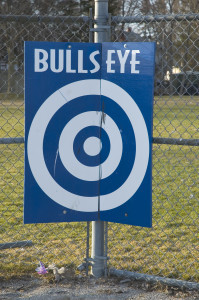
Self-publishing means running a small business. For me, it’s been a trial by fire. Fortunately, as in many small businesses, I had a bit of a slow period, starting out. This bought me a little time to figure out what the heck I’m doing. After all, I was an English major, not a business major.
When the business started picking up, I made a few good calls. One of them was to get an accountant. Another was the realization that I definitely needed to subcontract for skilled help with everything from website design to formatting to covers.
I spoke with another small business owner recently and she gave me a tip that really struck home for me. I was explaining that occasionally I felt scattered—sometimes because I’m asked to do things that seem worthwhile opportunities but don’t really work with my general “big picture.” These are distractions that are disguised as opportunities. Sometimes they seem like a good way to get exposure—but the amount of work and effort that I know I’d put into it would be so much more than I’d get out of it. These have taken myriad forms over the years—non-fiction pitches from traditional publishers, group blog invites, invites from trad. publishers to contribute to anthologies, invitations to teach writing courses, and panel invites from conference organizers.
I’ve turned them all down. I knew they were going to take me on a tangent. But I felt…guilty. As a parent, I think guilt is a way of life. But it didn’t feel good, professionally. I followed my gut, but I wondered if maybe my gut was just chicken or something.
This business owner told me to create a business philosophy or manifesto for myself. And then follow it. Let it guide me in my decision-making. And, when I’m presented with an opportunity…or distraction… that I should measure it up against my philosophy and feel confident enough to say: this doesn’t fit the plan.
Rejecting opportunities means opening up time to follow the path that I feel is more productive. A chance to focus my efforts. And as I work to develop my own business philosophy, I know that it’s going to basically revolve around writing books while curating material for other writers.
To anyone who actually took business classes in school, this may seem like a no-brainer. But it was fairly revolutionary for me…create an official plan. Reject opportunities that aren’t in line with the plan.
If anyone else is thinking about coming up with a business philosophy , I’ve found some interesting links on the topic: Mike Vardy’s Lifehack post, “10 Insanely Awesome Inspirational Manifestos” and Jocelyn K. Glei’s post for 99u, “5 Manifestos for Art, Life & Business.”
How do you stay focused on what’s important to you, as a writer?
Image: MorgueFile: Gracey
The post Creating a Business Philosophy appeared first on Elizabeth Spann Craig.
June 21, 2014
Twitterific Writing Links
by Elizabeth S. Craig, @elizabethscraig
Twitterific links are fed into the Writer’s Knowledge Base search engine (developed by writer and software engineer Mike Fleming) which has over 23,000 free articles on writing related topics. It’s the search engine for writers.
Facebook Ads: Should Indie Authors Buy Them? http://ow.ly/xV9PZ @CaballoFrances
Must Publishing Always Take Sides? http://ow.ly/yhjBE @Porter_Anderson @RLLafevers @thoughtcatalog
How to Build A Contact List To Grow A Relationship With Your Readers: http://ow.ly/xV8T3 @ebooksandkids
Exploring Story Worlds – How to get the most out of your research: http://ow.ly/xV98J @writers_write
If your family hates it when you write: http://ow.ly/xV9gd @kristaphillips
8 Things Not to Do When Pitching to an Agent: http://ow.ly/xSfdQ @LynnetteLabelle
10 Tips for Writing with Babies at Home: http://ow.ly/xSich @PatheosPagan
6 Subtle Ways to Increase Tension in Your Writing: http://ow.ly/xShi4 @RachelPhifer1
Bait-and-Switch for Self-Published Authors: http://ow.ly/xSh9e @victoriastrauss
How to Write Female and Male Characters: http://ow.ly/xShcA @LissyWrites
Book launch checklist: http://ow.ly/xSh1Y @Kelsye
Will I ever feel like a “Real” Writer? http://ow.ly/xSfhS @Alison_Stone
Why Living Hard Is Way Easier Than Writing Hard: http://ow.ly/xSinq @Authorlaura
Summer Writing for You, the Teacher: http://ow.ly/xSi78 @BethMooreTCRWP
Getting an Agent by Self-Publishing Your Manuscript: What Some Agents Think: http://ow.ly/xShyx @lindaepstein
How to write characters who are different than you: http://ow.ly/xSheI @sarahselecky
33 Unusual Tips to Being a Better Writer: http://ow.ly/xShoe @jaltucher
From White Page and Dark Space, Miracles Occur: http://ow.ly/xSflI @CLRozelle
6 Types of Character Flaws: http://ow.ly/xShr7 @mythcreants
Character Generators: http://ow.ly/xSh89
What are English Light Novels? A Stop For All To Learn About LN: http://ow.ly/xSh5e @OrganizationASG
Pan Macmillan’s Lloyd at FutureBook Hack: Ask what you can do for readers: http://ow.ly/yaJ0j @TheFutureBook @Porter_Anderson
Thematic Significance Statement Defines Every Story Decision: http://ow.ly/xSeJU @plotwhisperer
Quick Tips: Adverbial Dialogue Tags: http://ow.ly/xSePW @Savage_Woman
Query Question: more bad info, this time on self-pub and series: http://ow.ly/xSeV2 @Janet_Reid
Killing the Top Ten Sacred Cows of Indie Publishing: I Have To Sell Books Quickly: http://ow.ly/xSeGC @deanwesleysmith
Differentiation: A Book Marketing Must: http://ow.ly/xSeco @hanque99
Fast-Growing Independent Publishers, 2014: http://ow.ly/xSeSH @PublishersWkly
The Art of Writing for Games – Serving the Masters: http://ow.ly/yaGHD @timsbrannan
Quick Look: Writer Pro for iPad: http://ow.ly/xSegu @iPadInsightBlog
A Trick for Keeping Your Plot (and Story) on Target: http://ow.ly/xSekl @Janice_Hardy
Fiction Craft– Focusing the Camera: http://ow.ly/xSeF0 @wendylawton
Embracing the Digital Revolution: http://ow.ly/y2TzM @KristiBelcamino
In Defense of Typos: http://ow.ly/xSenO @io9
Yawn No More: Americans and the Market for Foreign Fiction: http://ow.ly/xSe6c @pubperspectives
Your Character is Lying: http://ow.ly/xSexX @JulieEshbaugh
The Emotion of Changing Your Mind: http://ow.ly/xSeN2 @mooderino
You Wrote a Book. Now What? http://ow.ly/xSeuT @jodyhedlund
How to Tell if Your Story is On Target: What’s —Your Book About in ONE Sentence? http://ow.ly/xSeAF @kristenlambtx
Writer’s Block? Use a Random Generator: http://ow.ly/xSerV @jamigold
Challenges that modern crime writers face in keeping stories credible: http://ow.ly/y7Z3h @mkinberg
When You Start Writing (Again) Only for You: http://ow.ly/xQnCF @novaren
Dissecting Your Characters: http://ow.ly/xQon6 @TerriLAustin
Novel Avoidance Syndrome: http://ow.ly/xQnlt @VictoriaLamb1
So You Want to Write a Love Triangle: http://ow.ly/xQm9g @shay_goodman
5 Ways to Create Conflict in Your Story: http://ow.ly/xQpyY @screencrafting
So You’ve Decided to Hire a Freelance Editor: http://ow.ly/xQpt1 @WritingRefinery
The Top 9 Writing Mistakes And How To Fix Them: http://ow.ly/xQpp6 @FutureofInk
How to Critique Others’ Writing: http://ow.ly/xQpO8 @writerdiaries
Writing Fiction: Facts v. Feeling: http://ow.ly/xQodx @lindasclare
15 questions for your beta readers — and to focus your own revisions: http://ow.ly/y7ITy @JodieRennerEd
5 Mistakes on the Way to Publishing Success: http://ow.ly/xQo2Q @CarmenConnects
7 things the most-highlighted Kindle passages tell us about American readers: http://ow.ly/xQnXh @voxdotcom
Best Books on Songwriting: http://ow.ly/xQn9f @natefancher
Written to Death: http://ow.ly/xQmU1 @VaughnRoycroft @writerunboxed
3 Ways to Pitch Your Novel (but not in the trash): http://ow.ly/xQo8E @lindasclare
Good Writing: No Matter Your Genre: http://ow.ly/xQnxA @JordanRosenfeld
The False Divide Between Book Promo and Author Promo: http://ow.ly/xQnsn @SharonBially @writerunboxed
Are you in danger of losing your readers’ suspension of disbelief? http://ow.ly/xQpBT @standoutbooks
Write Out Loud: How to Start Podcasting: http://ow.ly/xOui3 @cbramkamp @ninaamir
Scenes, Sequels, Sequences and Acts: http://ow.ly/xOvmp @woodwardkaren
When to Hire an Editor : http://ow.ly/xOuer @Savage_Woman
Scene: Fast or Fast-Paced? http://ow.ly/xOtOv @fictionnotes
3 Things to Know About Exposition & Telling: http://ow.ly/xOuKE @victoriamixon
How to prepare for the call: http://ow.ly/xOura @writerdiaries @ava_jae
Is Instagram Effective for Writers? http://ow.ly/xOwNR @carolewyer
How Can Your Characters Make Others Believe Them? http://ow.ly/xOtMF @skyefairwin
Should Secondary Characters Change? http://ow.ly/xOuz1 @mooderino
Location, Location, Location: http://ow.ly/xOuoo @janet_gover @womenwriters
4 story openings that put people off (and how to avoid them): http://ow.ly/xOuE3 @standoutbooks
Your Creativity Is like Any Other Muscle: http://ow.ly/xOv0n @99u
Do publishers see the value in audio? Listen for the consumer. http://ow.ly/y2T0A @Porter_Anderson @TheFutureBook @editoratfaber”
When you need a sidekick in your novel: http://ow.ly/xOu1G @writers_write
Choosing a look (Theme) for your WordPress site: http://ow.ly/xOu7S
Concocting Fiction from Fact: Using Research to Tell Better Stories: http://ow.ly/xOwLd @KeithCronin
5 Tips to Set a Better Scene: http://ow.ly/xOtV4 @novelrocket
Husband and wife sleuths in crime fiction: http://ow.ly/y3Fh9 @mkinberg
8 Ways to Beat Writer’s Block: http://ow.ly/xMsq3 @NatRusso
30 Famous Authors On Writing in Plain Language : http://ow.ly/xMqc4 @writers_write
Killing the Top Ten Sacred Cows of Indie Publishing: Put The Book Up and Leave It. | http://ow.ly/xMpQn @deanwesleysmith
FutureBook Hackers at work: Did we tell them enough? http://ow.ly/y2Tki @TheFutureBook @Porter_Anderson
11 Terrible Book Covers to Scare You Off Reading: http://ow.ly/xMqaj @MaxKnoblauch
How Audiobook Narration And Production Works (podcast): http://ow.ly/xMpTq @thecreativepenn
‘A Letter to Aspiring-Writer-Me from Debut-Novelist-Me’: http://ow.ly/xMuCu @nataliasylv @writerunboxed
10 Quick Ways to Feel Better With Fiction: http://ow.ly/xMpYy @tolstoytherapy
How to Vary Your Characters’ Voices: http://ow.ly/xVajS @LitCentralOC
7 tools of dialogue: http://www.writersdigest.com/online-editor/the-7-tools-of-dialogue @jamesscottbell
The Worse Advice You Can Take About Writing: http://ow.ly/xV8HO @DanaLeipold
Writers: Track Your Analytics and Measure Your Success: http://ow.ly/xV9XQ @CaballoFrances
5 Key Ways to Create a Character’s Distinct Voice: http://ow.ly/xV9cb @JordanDane
2 Dialogue Death Sentences & How to Get a Stay-of-Execution: http://ow.ly/xV9xx @MarcyKennedy
How To Be A Writer 101: http://ow.ly/xVatQ @davalynnspencer @SouthrnWritrMag
Semi-Professonally Pairing Books With Wine: http://ow.ly/xV9Jz @susangilmore
7 Reasons The Stuff You Post On Social Media Should Also Be On Your Website: http://ow.ly/xV93b @jspector
How to Know If You’re Editing Too Soon: http://ow.ly/xV8MI @losapala
Finding Motivation to Write: http://ow.ly/xV8PJ @maziebones
Scene Break vs. Chapter Break: How Do You Know? http://ow.ly/xVbs5 @ava_jae
3 Reasons You Need a Pen Name: http://ow.ly/xVbw5 @robinrwrites
How Do You Make a Good Story Worthy of Getting Past the Gatekeeper? http://ow.ly/xVb9n @karencv
3 tips for better scenes: http://ow.ly/xVcjw @lindasclare
Narrative Arc: Shaping Your Story: http://ow.ly/xVbX7 @fcmalby
How to Start Writing When You Won’t Start Writing: http://ow.ly/xVbCV @M_Richmond21
Themes That Develop Organically in Your Novel: http://ow.ly/xVc9U @CSLakin
Narrative Voice: http://ow.ly/xVaMZ @JoeMoore_writer
Story Structure… for Television: http://ow.ly/xVbZP @storyfix
The 5 best incentives authors can use to build an email list: http://ow.ly/xVbKu @alexhemus @standoutbooks
Unforgettable Writing: Use all 5 Senses to Add Emotion: http://ow.ly/xVbeY @OrlyKonigLopez
The Author Monthly Planner: A Freebie to Organize Your Writing and Marketing Life: http://ow.ly/xVc4V @duolit
Do You Need to Rethink Your Author Website’s Key Elements? http://ow.ly/xVaUH @Janefriedman
Why the Where Matters: http://ow.ly/xVbkI @sarahrcallender @writerunboxed
When You Write In Multiple Points of View: http://ow.ly/xVaZ0 @Margo_L_Dill
An Easy Exercise for Coming Up With Novel Ideas: http://ow.ly/xVbRu @Janice_Hardy @nownovel
4 Common Non-Fiction Title Cliches: http://ow.ly/y0Ugm @stevebenjamins
Self-Publishing Offers Hope for Diverse Authors Shut Out by Traditional Publishers: http://ow.ly/y0UMa @miralsattar
‘Every hour a glass of wine’ ––the female writers who drank: http://ow.ly/y0Uwq @olivialanguage @guardianbooks
Reunions in crime fiction: http://ow.ly/yhk2j @mkinberg
How To Conduct An Author Interview: http://ow.ly/y0Ue2 @write_practice
Will The Success Of Ebook Subscription Services Be Good For Publishers, Authors And Readers? http://ow.ly/y0Uke @jdgsaid
What 1 writer learned about landing an agent: http://ow.ly/y0TYw @MartinaABoone
Tips for creating a great villain: http://ow.ly/y0U2x @nownovel
Not all books and not all subscription services are created equal: http://ow.ly/y0UXZ @MikeShatzkin
Fine-Tuning a Manuscript–Comma Usage: http://ow.ly/yi727
Marketing Your Book Abroad? How About A Buddy System?Matchmaking for Writers: http://ow.ly/yhjpz @Porter_Anderson @mmatting
The post Twitterific Writing Links appeared first on Elizabeth Spann Craig.
June 20, 2014
Fine-Tuning a Manuscript–Comma Usage
Guest Post by Jack Smith
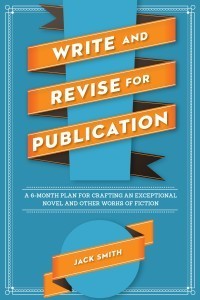
In fiction what is “correct” is what works—what creates strong characters, drives the story, and creates the appropriate tone. This applies to grammar and mechanics as well. I’ll have to admit, I do tend to be a bit schoolmarmy about the conventions of grammar and mechanics, but I also recognize when it’s important to depart from the standard handbook. A bullet train of comma splices might be desirable if you’re attempting to capture run-on thought. No punctuation at all might also be. When I’m editing my own work, as well as the work of others in my role as Fiction Editor for The Green Hills Literary Lantern, I tend to notice the following kinds of grammatical issues: subject-verb agreement, pronoun reference, misplaced modifiers, and, of course, matters of punctuation, which includes commas, semi-colons, colons, apostrophes, parenthesis—and more.
I’ll limit my comments here to commas. According to strict handbook rules and conventions, where should you use commas?
Before coordinating conjunctions (and, but, for, nor, or, so, and yet) between main clauses
After long phrases (generally 5 words or more) introducing main clauses
After subordinate clauses beginning with because, if, after, whereas, etc.
(Not before subordinate clauses that come after main clauses)
Between coordinate adjectives that modify a noun (e.g., tall, lanky man)
With appositives (e.g., James, a smart and ambitious man, has some serious goals.)
With direct address (e.g., All right, James, let’s discuss this.)
There are more comma issues to consider (non-restrictive and restrictive, for instance), but I won’t go into those. Let’s stop here.
Now, let’s say that you break handbook rules and conventions governing comma usage. Let’s say that your narrator states:
When James a man with a desire to obtain an education went to the city he usually went to a museum attended a concert or saw a play maybe it was Shakespeare maybe it was contemporary but he was let us say a great pursuer of the arts of all kinds.
Certainly from a strict schoolmarm perspective, this passage is loaded with comma “errors”—F work, for sure. Let’s look just at the comma usage—please ignore wording and anything else that might bother you. Stick to the comma question, and note where the standard handbook would call for comma insertions:
“When James, a man with a desire to obtain an education, went to the city, he usually went to a museum, attended a concert (,) or saw a play; maybe it was Shakespeare—maybe it was contemporary—but he was, let us say, a great pursuer of the arts of all kinds.
Notice that I placed parentheses around one comma since here it is optional. I used dashes to set off “maybe it was contemporary,” but I could have used commas. As to the rest, note commas around the appositive, the comma after the introductory subordinate clause, and the comma after the first item in the series. If I had used a comma before “maybe,” I would have a comma splice—a mechanical error by strict handbook rules. A comma is called for in the parenthetical phrase “let us say.”
Notice that not a single word is changed is this “corrected” version, and yet there’s a different feel achieved by supplying the commas, isn’t there? The first version is more loose and informal, the second more structured and formal. If your narrator is uneducated, perhaps the first version is better. Of course, these are two extreme versions; perhaps you leave out only few commas. Leaving out the comma after the introductory subordinate clause probably wouldn’t affect the tone very much. (And one could argue, even by strict handbook standards, it’s not that much of an “error” as long as the sentence is clear. On the other hand, if you leave out one of the commas in the appositive, that would certainly be a handbook error—and even appear to be a mistake to one who isn’t a handbook nut.) The comma splice wouldn’t have that much of an effect either. But here’s the point: The more you abide by, or bend, the rules and conventions, the greater the effect on style and tone—and the voice of your narrator. And keep in mind that the numerous rhythms and beats of words, phrases, and clauses, and even the appearance of the language itself on the page, the way passages are measured out, comma by comma, semi-colon by semi-colon, period by period—all this has a cumulative effect on your reader. Sometimes it’s hard to say exactly what that is, but as a reader you feel it.
There is no absolute right and wrong in fiction writing. It’s what works. When fine-tuning, use the handbook when it helps you create strong language; put it aside when it doesn’t.
Jack Smith is author of the novel Hog to Hog, which won the George Garrett Fiction Prize (Texas Review Press. 2008), and is also the author of Write and Revise for Publication: A 6-Month Plan for Crafting an Exceptional Novel and Other Works of Fiction, published earlier this year by Writer’s Digest. His novel ICON will be published in June by Serving House Books.
Prize (Texas Review Press. 2008), and is also the author of Write and Revise for Publication: A 6-Month Plan for Crafting an Exceptional Novel and Other Works of Fiction, published earlier this year by Writer’s Digest. His novel ICON will be published in June by Serving House Books.
Over the years, Smith’s short stories have appeared in North American Review, Night Train, Texas Review, and Southern Review, to name a few. He has also written some 20 articles for Novel & Short Story Writer’s Market, as well as a dozen or so pieces for The Writer. He has published reviews in numerous literary journals, including Ploughshares, Georgia Review, Missouri Review, Prairie Schooner, American Review, Mid-American Review, and the Iowa Review.
The post Fine-Tuning a Manuscript–Comma Usage appeared first on Elizabeth Spann Craig.
June 17, 2014
Embracing the Digital Revolution
By Kristi Belcamino, @KristiBelcamino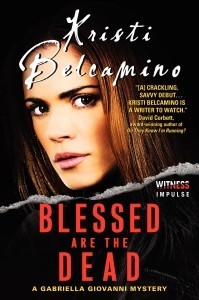
Writers dream of the day when they walk into a bookstore, see a book they wrote on the shelf, and then hold that book in their own two hands!
But what if a debut author is offered a digital-only book deal? Even if it is with one of the Big Five? No print book. What then? What does she do about that offer?
Well, she takes it!
At least I did.
I was beside myself, thrilled that an editor at one of the “big houses” liked my book. loved it even. At the same time, I had to let go of my dreams— holding my book in my hands, signing a physical book, and going cross-country on a grassroots book tour.
Instead, I had to think pragmatically and long-term, viewing every step I made as another one toward building a career as a writer instead of a flash-in-the-pan moment of ego-gratifying glory. I also realized that mystery readers—my readers—are huge into reading eBooks. All this meant taking the eBook deal.
But I must admit I clung to one tiny glimmer of hope within the fine print of my contract— some authors on the mystery imprint I was with would see a print version of their book. My contract explicitly stated, however, that there were no guarantees of a print version.
However, being the optimist that I am, I read that and thought, as Jim Carrey said in Dumb & Dumber, “So, you’re telling me I got a chance?”
Meanwhile, I wholeheartedly embraced this opportunity to get my book out into the world and began brainstorming ways to market it.
I’d heard of eBook authors giving author talks and then passing around an iPad so people could buy the book since there wouldn’t be a physical book to sell at the event, so I headed straight for the library and bookstores.
My favorite librarian told me that without a physical book, I could not do an author reading.
When I contacted bookstores, I heard the same thing:
No book. No author event.
I wondered if there was anything I could do to increase the chances of my book going to print, but suspected it all had to do with how sales of my book went. I understood that. It made sense. But I also know that I’m terrible at selling anything. At garage sales I usually give half of our things away (much to my husband’s chagrin).
I wondered how could I encourage people to buy my book without being a jerk? I’m still not sure. My answer was to tell people about my book on social media, trying to follow that 80/20 rule (80 percent NOT you or your book and 20 percent blatant self promo).
Meanwhile, as thrilled as I was to be working with one of the big five publishers, I still mourned letting go of my writerly dreams. For instance, when I visited my favorite bookstores, my stomach would sink a little realizing that even though my book was being published, it would not be on those shelves.
There were more discouraging moments:
My brother-in-law said he wouldn’t read my book unless it was in print.
A book editor at a daily newspaper said she only read printed books.
The editor of a mystery magazine said the same.
The resistance was disheartening.
Unlike people who self publish, there wasn’t even an option for me to have a print on demand book. It was up to the publisher whether to print copies of my book. Or not.
There was nothing I could do about it.
One day, I decided to ask once my publisher, once again, what needed to happen for me to see my book come out in print. This time, the answer was “There will be a print run.”
Say what?
How many?
Well, in the business, they call it a SPR, a small print run. I will have a book to hold in my hand. I will have books to sign. I may not be taking that grassroots book tour. I may not see my book in the big box bookstores.
But I will be able to have a book launch party at my favorite mystery bookstore, which has ordered the print book already!
I will be able to hold my book in my hands! I will be able to give author talks at the library! People, like my brother-in-law, will now read my book.
I will be able to—gasp—sign my book!
I had to adjust my dreams a little, but don’t we all. In the long run, I still count the way things worked out as a dream come true.
Kristi Belcamino is a writer, artist and crime reporter who also bakes a tasty biscotti. Her first novel, “Blessed are the Dead,” (HarperCollins June 2014) is inspired by her dealings with a serial killer during her life as a Bay Area crime reporter. As an award-winning crime reporter at newspapers in California, she flew over Big Sur in an FA-18 jet with the Blue Angels, raced a Dodge Viper at Laguna Seca, and watched autopsies. Find out more at www.kristibelcamino.com or on Facebook here: https://www.facebook.com/kristibelcaminowriter.
The post Embracing the Digital Revolution appeared first on Elizabeth Spann Craig.
June 15, 2014
Reassessing Goals at Mid-Year
by Elizabeth S. Craig, @elizabethscraig
I dislike resolutions, but I do like setting goals. I know that June isn’t the popular month for setting goals that January is, but it’s a great time to do a mid-year checkup on our goals.
If we’re not where we want to be, my advice is to scrap the January goals completely and start fresh. Feeling forced to play catch-up is really unpleasant.
The most important thing, I think, for writing goals is to make them no-brainers. Something so easy that we can pile up a bunch of successes in our goal-meeting. I’ll reiterate my advice for goal setting that I posted in January.
Three tips for making mid-year goals reachable:
Set goals for the rest of the year—and make them very easy to meet. See how modest you can make those goals and still reach your end-goal.
Break those goals down into small parts—small enough to be items on a to-do list or calendar. Instead of “finish my book,” I’ve found it’s more effective to break it down into smaller deadlines: “finish chapter ten by July 1,” (maybe accompanied with a note on the calendar) or list 10 ways to approach _____scene (a difficult scene we might be facing). Or even “write 15 minutes each day for 5 of the next 7 days.”
Track and post accomplishments. To me, this is key for keeping motivated. I keep ticked off items on my to-do list and print out online calendars that show past days’ completed items. Or we can post our progress on our blogs or websites.
To help with setting new goals, I’m linking to a free writing goals worksheet created by Gabriela Pereira at DIY MFA.
Have you ever done a mid-year goal check-in? What tips have you got for making goals manageable and sticking with it?
Image: MorgueFile: Dhester
The post Reassessing Goals at Mid-Year appeared first on Elizabeth Spann Craig.
June 14, 2014
Twitterific Writing Links
by Elizabeth S. Craig, @elizabethscraig
Twitterific links are fed into the Writer’s Knowledge Base search engine (developed by writer and software engineer Mike Fleming) which has over 23,000 free articles on writing related topics. It’s the search engine for writers.
Romance Writing: Description: Choosing the Right Words: http://ow.ly/xKUfJ @taliaqui
How to Keep Your Writing in Your Over-the-Top Busy Life: http://ow.ly/xKTBQ @writeabook
16 go-to sources for copyright-cleared images: http://ow.ly/xKTWl @KatelynPiontek
Tips for better-using MS Word: http://ow.ly/xKTDO @byondpapr
Should I Sit, Stand, Run, or Recline at My Desk? http://ow.ly/xKTnv @melaniepinola
Get the Scoop on Fair Image Usage: http://ow.ly/xKTRv @douglangille @beccapuglisi
Stretch Your Author Creative Capital a la Spanx: http://ow.ly/xKTwn @wherewriterswin
Choosing a pen name and connecting to one on Amazon: http://ow.ly/xKU6J @loislewauthor
Why Eimear McBride’s Prize-Winning ‘Girl’ Is Not On Sale In The US: http://ow.ly/xXKhD @Coffee_House_ @Porter_Anderson
Gearing up for #FutureBookHack: 5 Challenges: http://ow.ly/xXKzX @TheFutureBook @Porter_Anderson
What Is the Value of Traditional Publishers? http://ow.ly/xXL4T @Janefriedman
Frogs, Hot Water, and the 7 Deadly Sins: Making Trouble for Characters: http://ow.ly/xXLvM @manmartin1
Turning points in screen narratives: http://ow.ly/xKTHr @medkno
The Importance of Killer Sidekicks: http://ow.ly/xKTln @susanspann
How to Find Your Hidden Creative Genius: http://ow.ly/xKUbL @james_clear
Writing Historical Fiction for Dyslexic Readers: http://ow.ly/xKU1E @CarolineLawrenc
How To Succeed At Screenwriting: Set Goals: http://ow.ly/xKTYQ @gointothestory
12 Things You Were Not Taught in School About Creative Thinking: http://ow.ly/xKTJ2 @gointothestory
A Writer’s Block Breaker: 30 Songs For 30 Chapters: http://ow.ly/xKTKE @roniloren
Redefining Teen Romance: On Writing Sex, Love and Emotions: http://ow.ly/xKTNj @diymfa @wendyluwrites
Writing A Publishable Novel: What “Finally Getting It” Really Means: http://ow.ly/xKUid @storyfix
Narrative, Plot, and Story: http://ow.ly/xL3IO @writing_tips
Writing Your Memoirs: 3 Places to Find Two Days: http://ow.ly/xL3R0 @alainsworth
How to create tension in your writing: http://ow.ly/xL3ku @nownovel
Why Words Matter in Fiction and Story: http://ow.ly/xL3na @noveleditor
A complete guide to minimalist writing: http://ow.ly/xL3m8 @minimalstudent
Rejection letters publishers sent to 11 great authors: http://ow.ly/xL3Fa @IndoEnts
Instagram Gets Literary: http://ow.ly/xL3OZ @therivetermag
The Evolution Of Storytelling In Video Games: http://ow.ly/xL3tC @ParadeMagazine @willydubz
Dialogue Writing Tips from Bartleby Snopes: http://ow.ly/xL3Hu @A_WritersStudio
12 Things Every Indie Author Needs to Know: http://ow.ly/xL3yS @TherinKnite
Writing Hated Characters: A Study in Snape: http://ow.ly/xL3w5 @emilyekmurdoch
The 4 Worst Places for Freelance Writers to Start: http://ow.ly/xL3Gv @ticewrites
7 Lessons for Writers from The Fault in Our Stars: http://ow.ly/xL3qC @jeffgoins
Presence on the Page: What It Is, and What It Isn’t : http://ow.ly/xL3B5 @manzanitafire
Can You Describe Your Book Market? http://ow.ly/xL3pe @ninaamir
5 Reasons to Write a Short Book Fast: http://ow.ly/xMlpI @ninaamir
Author Website Design 101: http://ow.ly/xMlV6 @MKAlexander1
The Serious Novel isn’t Dead, It Won: http://ow.ly/xMl5s @mharoldpage
Writing in Plain Language – How to remove meaningless phrases: http://ow.ly/xMlex @writers_write
How To See If A Domain Name, or URL, Is Available: http://ow.ly/xMl1C @travisnward
8 Most Common Editing Errors In Self-Published Books: http://ow.ly/xMlwy @selfpubreview
How a Good TV Show Can Help You Write (and Edit) Your Novel : http://ow.ly/xMlsg @chicklitgurrl
The Dangerous Trap of Forced Writing: http://ow.ly/xMlB5 @Awesome_Dawn
Talents and Skills Thesaurus Entry: Basic First Aid: http://ow.ly/xMkLf @beccapuglisi
What Poets Know That Most Writers Don’t: http://ow.ly/xMl91 @schwamb
How to Buy an ISBN: http://ow.ly/xMkTA @travisnward
How to Pitch Yourself: Young Eudora Welty’s Charming Job Application to The New Yorker | http://ow.ly/xMlkx @brainpicker
5 Tips for Effective Author Marketing: Small is the New Big: http://ow.ly/xMlJv
An Agent Answers Questions: http://ow.ly/xMlDG @agentmilburn
Turning your poetry dabbling into a marketing tool: http://ow.ly/xMkX3 @magdalenaball
Will One Bad Book Ruin Your Career? http://ow.ly/xMlaA @jamesscottbell
5 Must Know Websites for the Independent Filmmaker: http://ow.ly/xMr7j @talenthouse
How Millennials Use Technology in Writing: http://ow.ly/xMszW @MSaintGermain
5 Experiences Writing Fiction Gives You (That Other Things Can’t): http://ow.ly/xMuLs @vgrefer
Screenwriting: Here’s Why Women-Driven Films Are Important: http://ow.ly/xMv11 @aokorycinski
Case Study: When Your Concept is Also a Paradox: http://ow.ly/xMq4w @storyfix
9 self-pub podcasts to listen to: http://ow.ly/xMqjs @AnthonyVenutolo
Finishing the Novel: Daily Task of “Getting it Done”: http://ow.ly/xMq1Z @elissafield
Is Writing Hard? 7 Ways to Make it Easier: http://ow.ly/xMsc7 @DeniseDrespling
7 Signs You Should Cut Your Prologue: http://ow.ly/xJeya @ava_jae
Writing: Find time or make time in 22 quick tips: http://ow.ly/xJdWc @rchazzchute
How to Put Together an Anthology: http://ow.ly/xJe9m @wickerkat
Character Flaws: http://ow.ly/xJe4m @ritahenuber
6 Things to Keep in Mind When Gathering Testimonials/Book Blurbs: http://ow.ly/xJdKs @writersdigest
Why Your Writing Sounds Weird (And What You Can Do About It): http://ow.ly/xJebN @joebunting
Are You the Writer’s Block? http://ow.ly/xJehD @BookEmDonna
Chekhov’s gun and the mental inventory: http://ow.ly/xJe0q @PhilAthans
Trust your Readers: http://ow.ly/xJez5 @karencv
The Secret Sauce for Indie Publishers: Attitude: http://ow.ly/xJe5P @ninaamir
Genres Promise Certain Emotions: Are you Keeping Your Promise? http://ow.ly/xJe1Z @fictionnotes
Working theme into novels: http://ow.ly/xJe6Y @CSLakin
3 Critical Steps to Writing Success: http://ow.ly/xJecB @jeffgoins
5 Motives For Animals in Fiction: http://ow.ly/xJdZf @pyrosama
These Writing Myths Will Keep You From Getting Published: http://ow.ly/xJeeS @jffelkins
Growing Readership By ‘Lighting Up Your Writing’: http://ow.ly/xJenf @Claudsy1
Humourous Quotes About Writing: http://ow.ly/xJe8j @blogher
5 Challenges for this weekend’s #FutureBookHack: http://ow.ly/xQqrA @RickJoyce @Porter_Anderson
Write a killer climax that leaves readers breathless: http://ow.ly/xHp6V @standoutbooks
Writing the Bittersweet Ending: http://ow.ly/xHnxA @mkhutchins
Manuscript Formatting and the Nuclear Option: http://ow.ly/xHptX @AuthorMelindaC
How to finally make it as a writer: http://ow.ly/xHp3V @jennaavery
3 Reasons Why Letters and Diaries Are Essential to Your Story: http://ow.ly/xHpwX @epbure
3 Cautions For Adding Research Into Stories: http://ow.ly/xHnv1 @jodyhedlund
Self Publishing Blog: http://ow.ly/xHppZ @bibliocrunch
What’s wrong with Your Story? On narrating a tale: http://ow.ly/xHoVR @davidfarland
How to Raise the Stakes in Our Story: http://ow.ly/xHoxd @jamigold
Burying the Hachette: http://ow.ly/xQq20 @writerunboxed @KeithCronin
5 Lessons from the Self-Publishing Front Lines: http://ow.ly/xHoBB @KerryGans
Control Your Life/Get Out of Yourself: http://ow.ly/xHnJW @katweyer
Giving Your Characters A Little Umph: http://ow.ly/xHplZ @larin20
Things Change and Yet Some Publishing Truths Remain the Same: http://ow.ly/xHpdh @author_sullivan
Contracts: One Little “s” Can Change Everything – Nelson Literary Agency: http://ow.ly/xHnsr
Superheroes conquer the literary novel: http://ow.ly/xHnBa @guardianbooks
Embrace Constraints: http://ow.ly/xHoHi @99u
A Screenwriter Answers Students: What’s the best way to break into the business? http://ow.ly/xHoqY @KenLevine
13 Essential Summer Reads According to Book Critics in 1852: http://ow.ly/xGxIj @nickgreene
Judging Short Fiction: http://ow.ly/xGxN6 @writerunboxed
Utilizing Deep POV: http://ow.ly/xMhc1 @cluculzwriter
The Amazon/Hachette Battle and Why It’s Great to Be a Self-Published Author: http://ow.ly/xGxDK @miralsattar
10 Reasons You Should Be Writing Memoir Right Now: http://ow.ly/xGxzR @manzanitafire
What Your Proposal Says about You: http://ow.ly/xGxuE @marygkeeley
How To Format Your Query in 5 Easy Steps: http://ow.ly/xB1fC @carlywatters
Lessons From Jane Eyre: 5 Ways to Bring Minor Characters to Life: http://ow.ly/xGxxO @KMWeiland
How to make our story more accessible: http://ow.ly/xMh2u @JacksBlackPen
8 Tips for Writers Using Pinterest: http://ow.ly/xB0T6 @CaballoFrances
Simon & Schuster Offers New Author Tools: http://ow.ly/xMvhz @lorcadamon
12 Dead Authors to Follow On Twitter: http://ow.ly/xB10f @parchmentgirl37
Fast and Easy Edits: http://ow.ly/xB1jR @DianeBohannan
8 Steps For Getting Started on a Writing Career: http://ow.ly/xGxSR @jodyhedlund
Advice From Seth Godin Every Writer Needs to Know: http://ow.ly/xGy1s @Adderworld
How To Upload & Sell Ebooks On Google Play: http://ow.ly/xGy87 @mollygreene
9 Books About Authors: http://ow.ly/xGy3Q @flavorwire
Why You Don’’t Need to Escape for Inspiration: http://ow.ly/xB1lp @monicamclark
How Do Publishers Decide What Books to Turn Into Audiobooks? http://ow.ly/xGxWA @voicesdotcom
4 Questions to Ask to Make Your Scenes Pop: http://ow.ly/xB1i5 @Janice_Hardy
How to Achieve Writing Goals: http://ow.ly/xB14S @carol_brill
Villages in crime fiction: http://ow.ly/xLgXL @mkinberg
The Green-Eyed Conference Monster: http://ow.ly/xB0FQ @jaelmchenry @writerunboxed
Tips for Loosening up Your Writing: http://ow.ly/xB0nK @jodierennered
5 Steps to a New Adult Sex Scene: http://ow.ly/xB03a @AuthorTiffany
Pros and cons of including profanity in a novel: http://ow.ly/xB0AK from Clever Girl Helps
How Should I Publish? http://ow.ly/xAZTi @AuthorU
How to finally make it as a writer: http://ow.ly/xB0hA @jennaavery
4 Pieces of Facebook Advice You Can Ignore: http://ow.ly/xB0Ob @lisahallwilson
14 Common Mistakes With Prepositions: http://ow.ly/xz58o @Writers_Write
When the character doesn’’t know he’’s going to arc: http://ow.ly/xB0je @JordanMcCollum
Go Ahead—–Ignore Your Novel! http://ow.ly/xB0uL @cbramkamp
Writing ‘Rules’: Start in the Middle of Action: http://ow.ly/xz5hl @HGComan
Can authors get smarter with Amazon keywords and categories? Start here: http://ow.ly/xz4JI @roz_morris
Know Why You’’re Submitting Your Writing: http://ow.ly/xz4MK @NathanielTower
Medium admits pay-per-click isn’’t the best way to pay writers: http://ow.ly/xz5OY @mathewi
How to write an interesting prologue: http://ow.ly/xz5Zs from Clever Girl Helps
Agents vs editors: http://ow.ly/xz5nl @thebookseller
The Best Way to Deal With Emotional Conflict When Writing: http://ow.ly/xz3rZ @gemmaleehawdon
Put More Strings in Your Writing Bow: http://ow.ly/xz4xt @jamesscottbell
3 Reasons Why Writers Should Keep A Sentence-A-Day Journal: http://ow.ly/xxUH2 @clarissadraper
Avoid “Zero Days” to Form Better Habits: http://ow.ly/xz3Dd @calldrdave @lifehacker
How Do Different Characters Express Emotion? http://ow.ly/xxUTQ @skyefairwin
4 Writing Tips for Better Writing: http://ow.ly/xxUq4 @StratusInteract
10 writer’s tools that got 1 writer writing again: http://ow.ly/xxUO6 @writingmytruth
Be a better writer in 15 minutes: 4 TED-Ed lessons on grammar and word choice http://ow.ly/xxUe5 @TED_ED
7 Tips on Getting Book Reviews: http://ow.ly/xxUxH @travisnward
How To Hook Your Audience: http://ow.ly/xz4gv @PretenderSteve @CraigVanSickle1
How to handle character change slowly through the story’s course: http://ow.ly/xz4uc from Clever Girl Helps
Facing The Ying-Yang of Publishing Fears: http://ow.ly/xz3Oz @JulieeJohnsonn
Plotting, Pacing, and Crossing Over: http://ow.ly/xz4Bv @AnneGBrown
A quick test to determine if your protagonist is too static or unrealistic: http://ow.ly/xz3TO from Clever Girl Helps
How To Write For the 21st Century Reader: 6 Tips to Modernize Your Prose: http://ow.ly/xz4HW @annerallen
The Secret To Pixar’s Success: Failure: http://ow.ly/xz4cg @buzzfeed
Pick up the Pace for a Real Page-Turner: http://ow.ly/xxV9f @jodierennered
How Can Your Characters Make Others Believe Them? http://ow.ly/xxV47 @skyefairwin
When book sales are slow…: how to keep motivated: http://ow.ly/xx7jw @Roz_Morris
Creativity and Chaos: 3 ways organization gets your passion project off the ground: http://ow.ly/xx5GU @blinkist
Creating Matriarchies: http://ow.ly/xxbKI @mythcreants
The War Between ‘Authors’ and Writers: http://ow.ly/xx4FG @BV @vpostrel
Why 1 Writer Isn’t Publishing Paperbacks: http://ow.ly/xxakH @MikeWellsAuthor
Self-published authors: where you live doesn’t matter: http://ow.ly/xxbzr @chrisrobley
Tips for writing villains–villain theory: http://ow.ly/xxa5H from Clever Girl Helps
Editor’s Eyes: Writing Advice from Don Draper: http://ow.ly/xx9OK @KateBrauning
Dani Shapiro on Vulnerability, the Creative Impulse, the Writing Life, and How to Live with Presence: http://ow.ly/xx4SY @brainpicker
The Best Sounds for Getting Work Done http://ow.ly/xx9UL @kevinpurdy
Publishing’s southerly migration at BEA (and gnashing of teeth): http://ow.ly/xHfxP @Porter_Anderson
Gay Characters in Comics: The Bumpy Road of Marvel Comics in the Mid-2000s: http://ow.ly/xv4yV @GeeksOUT
Becoming Your Own Book Editor: 4 Tips For Better Book Editing: http://ow.ly/xv4tO @ebooksreloaded
Tips for writing a genius/prodigy: http://ow.ly/xx9kf from Clever Girl Helps
The Independence of Indie Authors: http://ow.ly/xx5hu @JFBookman
Google Yo’ Bad Self – The Importance of Online Branding in Comic Book Marketing (and Other Genres): http://ow.ly/xv6A2 @niftymat
The wonderful world of villains: http://ow.ly/xuYN4 @momentumbooks @hildebrandburke
Scriptwriting–Sequence Breakdowns–The Wizard of Oz (1939) http://ow.ly/xuYFJ @TheScriptLab
The power of your writing: http://ow.ly/xv1pD @wynlim
Most Common Writing Mistakes: Describing Character Movements: http://ow.ly/xuZ3N @KMWeiland
How to Launch a Comic Book Series: An Introduction: http://ow.ly/xuYBm @niftymat
Experimental Fiction and Independent Publishing: http://ow.ly/xv4ke @SaraWielenberg
Don’t throw in the towel if your books aren’t selling: | Book Marketing Professionals: http://ow.ly/xusHG
Narrative Voice: http://ow.ly/xut23 @JoeMoore_writer
3 Patterns To Find In (or Write Into) Fiction: http://ow.ly/xusOx @vgrefer
Indie Authors Quitting Their Day Jobs: http://ow.ly/xusll @passivevoiceblg
3 Tips How to Reduce You Editing Costs: http://ow.ly/xuYTV @111publishing
Top 5 Elements of a Great Slasher Film: http://ow.ly/xv1ta @HorrorFreakNews
Why is my book not selling? Here are some reasons and how to fix them: http://ow.ly/xuYVJ @standoutbooks
10 steps to surviving being a writer: http://ow.ly/xusoM
Winning at Monopoly: http://ow.ly/xuscy @HughHowey
5 Things Rocky Taught a Writer About Knockout Main Characters: http://ow.ly/xusRx @Write_Tomorrow
Shakespeare Invented 1,700 Of Our Everyday Words: http://ow.ly/xusVx
8 Tips For Perfect Pitches & Super Selling Documents: http://ow.ly/xusdy @bang2write
7 Item To-Do List for Amazon Author Central Profile: http://ow.ly/xushA @Jason_Matthews
BEA’s Author Hub for Self-Publishers: Upbeat and Positive: http://ow.ly/xDMAT @Porter_Anderson
How Diverse are Comics and Graphic Novels? http://ow.ly/xtBfw @BrigidAlverson @SLJournal
A new initiative to encourage women writers to pitch their writing: http://ow.ly/xtAV0 @waouwwaouw
Hatred of Publishing: A Conversation Between Industry Dropouts: http://ow.ly/xtB6F @therejectionist @jenpanic
Twitter Trumps Facebook For Driving Book Sales: http://ow.ly/xtAHs @jeffbercovici @forbes
Why Free Is Your Best Marketing Tool (And How to Harness It): http://ow.ly/xtB9s @bookgal
James Patterson BEA Fail: http://ow.ly/xtAoW @jakonrath
How to build a successful mystery series: http://ow.ly/xtA2d @cbcbooks
Don’t look back on your writing journey & regret the choices you made, pay attention now: http://ow.ly/xtAMS @ediemelson
Michael Crichton’s Method for Plotting Out a Story: http://ow.ly/xtBjF
Author’s Eye-view of a book conference: http://ow.ly/xtBdk @andimarquette
5 Ways To Succeed in the German Market: http://ow.ly/xtAdt @wordswithjam
Anti-Heroes: Why Devious is so Delectable, and Where are all the Women? http://ow.ly/xtAaU @msheatherwebb @writerunboxed
Is Publishing is the New Blogging? http://ow.ly/xtAyT @selfpubreview
6 Reasons to Write a Short Story: http://ow.ly/xtjuD @Julie_Glover
Beginning a Story: What Has to Be There: http://ow.ly/xtAsT @Margo_L_Dill
When Should You Self-Publish Your Book? http://ow.ly/xt5nl @CriticalMargins
Why Too Many Flashbacks Might Be a Warning of Deeper Story Problems: http://ow.ly/xt5ko @kristenlambtx
5 Ways to Fuel your Imagination: http://ow.ly/xt5he @M_Richmond21
Are Video Games the New Novel? http://ow.ly/xt5ud @johnmichaelbell
Which Drawers to Open: A Writer’s Boundaries: http://ow.ly/xt5HS @AndiLit
Top 10 novels inspired by Shakespeare: http://ow.ly/xt5KQ @sallyoreilly
How to Create Twitter-sized Bites http://ow.ly/xt5yv @ava_jae
#Twitter #hashtags for novices: http://ow.ly/xt5zV @carolewyer
Narcissism: Is Your Villain in Love With Himself? http://ow.ly/xt5OB @FionaQuinnBooks
Barnes and Noble Will Stop Selling Audiobooks July 1st: http://ow.ly/xz708 @Goodereader
10 Things to Consider When Revising Your Novel: http://ow.ly/xt5pS @AlienNextDoor
5 Ways to Create Likable Characters: http://ow.ly/xt5j7 @janice_hardy
Script To Screen: “Flight”: http://ow.ly/xt5lk @gointothestory
Developing Multiple Income Streams: http://ow.ly/xt5xl @FinishedPages
2 Things to Get Right: Categories and Keywords: http://ow.ly/xt5mi @niniehammon
Openly Gay in YA: 4 Characters to Know Now: http://ow.ly/xt5p0 @missriki
Trademark Tips for Writers: http://ow.ly/xt5FV @robinrwrites
Publishers Weekly to Integrate Self-Published Reviews in Book Reviews Section: http://ow.ly/xx6jF @galleycat
Adjusting to a Summer Writing Schedule: http://ow.ly/xxdUM
Publishers’ Deal with the Devil (on DRM): http://ow.ly/xsDZU @stratechery
Questions to ask to determine if an idea can be developed into a book: http://ow.ly/xsCN5 @aswinn @writerunboxed
The Talk Of BEA: Amazon Blogs About Hachette: http://ow.ly/xxhg7 @Porter_Anderson @thoughtcatalog
3 Ways to Get More Honest Reviews for Your Book: http://ow.ly/xsERe @Self_Publish
Come Up With a Killer Story Concept–Before You Start Writing: http://ow.ly/xsEDP @kmweiland
The Art of Neil Gaiman: http://ow.ly/xsCPG @brainpicker @neilhimself
Using Your eBook Writing Folders Effectively: http://ow.ly/xx9A1 @gpstberg
8 Essentials Tips for a Successful Book Reading by a Self-Published Author: http://ow.ly/xsCR5 @judy_croome
If it comes easy, it’s probably a cliché: http://ow.ly/xsCSf @JoeMoore_writer
Focus on ‘an Audience of One’ to Avoid Creative Fear: http://ow.ly/xsDlp @WhitsonGordon
Crowdsourcing Your Way To What Customers Really Want–Courtesy Of Teen Romance Novelists: http://ow.ly/xsCUr @lvanderkam @fastcompany
Character Talents and Skills: Fishing: http://ow.ly/xxdFw @angelaackerman
10 Observations on Book Expo America from the Author Hub: http://ow.ly/xx60g @bob_mayer
Story Writing From Start To Finish: Don’t Get Lost In The Middle: http://ow.ly/xsEP7
The New Literary Fiction Superstars Are Essentially Memoirists: http://ow.ly/xsDHf @michelledean
The Publishing Timeline: http://ow.ly/xsCWc @RachelLKent
4 Ways to Sift Through Writing Advice: http://ow.ly/xvOHf @LyndaRYoung
How Do You Make Ideas Into A Book? http://ow.ly/xsEGu @nataliewhipple
3 Tips for Your Marketing Campaign: http://ow.ly/xsEmL @marygkeeley
Author Interviews: Why We Hate Them: http://ow.ly/xsDen @DianthaJones
Crime fiction involving art theft and forgery: http://ow.ly/xvOT3 @mkinberg
How 1 Writer Started Another Novel to Help Write His Current Novel : http://ow.ly/xsEj9 @BTMargins
Subscription services for ebooks progress to becoming a real experiment: http://ow.ly/xsEqV @MikeShatzkin
What a Freelance Editor Can (and Can’t) Do for You: http://ow.ly/xsEXU @jenichappelle
7 Surprises On The Hero’s Path: http://ow.ly/xnO2C @ibelieveinstory
5 Steps Toward Your Truest Contribution: http://ow.ly/xnNPP @kcraftwriter
Why Quieter Stakes Are Easier to Plot With: http://ow.ly/xnNpl @Janice_Hardy
Be a Collector of Ideas: http://ow.ly/xnNdd @Awesome_Dawn
‘Zero-Based Thinking’ for Writers: http://ow.ly/xnN4F @MattEEaton
5 Marketing Strategies for Writers Who Hate Promoting Their Own Work: http://ow.ly/xnNm2 @hughosmith
Choosing a Point of View Character: http://ow.ly/xnND2 @Janice_Hardy
The post Twitterific Writing Links appeared first on Elizabeth Spann Craig.
June 12, 2014
Frogs, Hot Water, and the Seven Deadly Sins: Making Trouble for Characters
by Man Mart
in,
@manmartin1
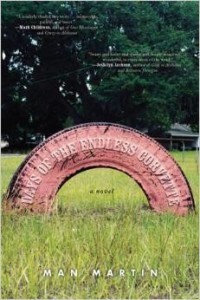
I’ve been reading students’ unpublished novels for a summer class I’m teaching alongside Nancy Zafris at Kenyon College in Ohio. Again and again, I see the same fundamental flaw: the characters refuse to get into trouble. This is understandable. Most of us – except for the hopelessly neurotic – are very good at avoiding trouble. This isn’t to say we run from challenges, but trouble itself we stay out of. If there are difficult people with whom we can’t get along, we either stay out of their way entirely or deal with them on a superficial level, being as outwardly courteous as we can stand. We do not take deliberate actions to sabotage our love lives or our careers. For the most part, we obey the law. We don’t embezzle funds or commit murder.
No one should get into trouble if there’s any way to avoid it. Trouble makes everyone unhappy. Trouble prevents us from self-fulfillment. Trouble causes stress and migraines. Trouble is just too much trouble.
The trouble is, trouble is precisely what your characters have to get into. Ahab can’t say, “Whew! That durn whale chawed off my leg! I’m staying on shore from here on!” Romeo can’t say, “Juliet’s the daughter of my enemy? Uh-oh, better steer clear of her!” Humbert Humbert can’t say… Well, ahem, you get the idea.
I remember as a child, when someone in a book or tv show pulled some especially bone-headed maneuver, asking my mother, “Why did So-and-So do that?” What I was really asking was, why would anyone do something that was only guaranteed to get them deeper into trouble? My mother’s wise response was, “Well, if they didn’t do that, we wouldn’t have a story.”
That’s the key to the whole thing. Characters can’t just be in trouble – they have to get into it by their own wilful actions. No trouble, no story. That’s the genius of Huck Finn; Jim is escaping slavery on the Mississippi which heads south; the longer they’re on the river, the deeper into trouble they go.
The story of our lives is largely one of how we stayed out of trouble, or managed to get out of trouble with a minimum of pain once we got into it. In fiction, it’s just the opposite: it’s characters getting into trouble in the first place, and making it as bad as possible for themselves before they get out, if they ever do. So how does a writer, who like any healthy human being, is a gifted trouble-avoider, create a character who gets into trouble?
When it comes to getting characters in trouble, writers have an external knob they can twist and an internal one. The external knob is the outside circumstances. If a character is marooned in a lifeboat with nothing but another shipmate and a book called, 101 Tasty Recipes for Shipmate, you know he’s going to get into trouble and you have a pretty clear idea of what kind of trouble. The internal Knob is your character’s propensities. The Seven Deadly Sins are a virtual how-to list for making people get into trouble. Envy, Greed, Wrath, and Lust are perennial favorites, and, of course, Pride was the go-to among the Ancient Greeks. For some reason, not many writers use Gluttony or Sloth, but even those have been done.
There’s a saying that if you put a frog in a pot of water and turn the heat up slowly, the frog will boil to death, never realizing the temperature is changing. As a writer, you don’t want to do it that way. Get the water as hot as you can as quickly as you can, and stoke your frog with sufficient Wrath, Pride, Envy or whatever to make him jump.
And that’s where your story begins.
Man Martin is two-time winner of Georgia Author of the Year for Days of the Endless Corvette, and Paradise Dogs. He blogs daily at manmartin.blogspot.com
The post Frogs, Hot Water, and the Seven Deadly Sins: Making Trouble for Characters appeared first on Elizabeth Spann Craig.

